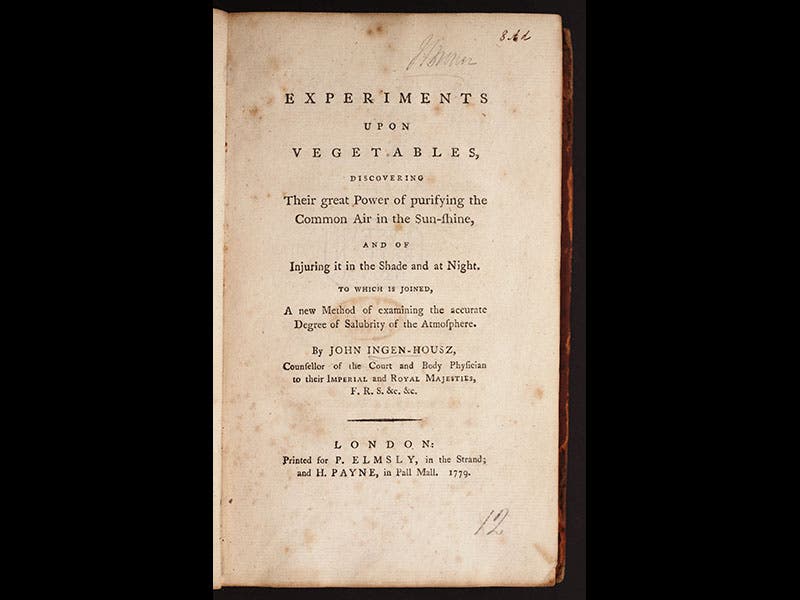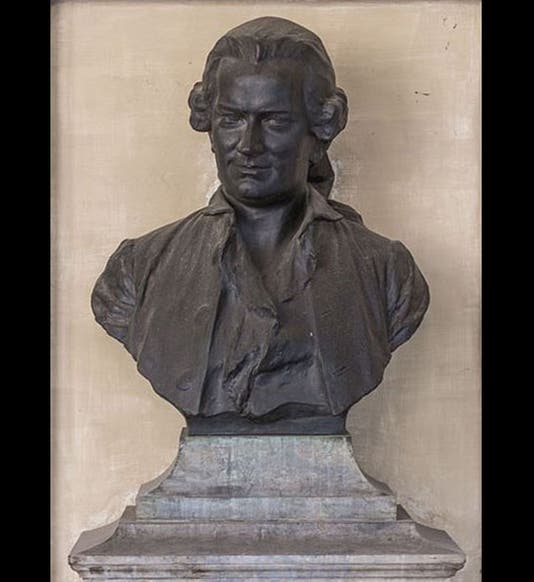Scientist of the Day - Jan Ingenhousz


Jan Ingenhousz was a Dutch physician and plant physiologist, born on Dec. 8, 1730. Ingenhousz is best known for his discovery of photosynthesis, which he announced in his book, Experiments upon Vegetables, discovering their great power of purifying the common air in the sun-shine, 1779. Joseph Priestley had already discovered that a plant could restore "goodness" to the air in a closed vessel, after an animal such as a mouse had depleted it. Ingenhousz's contribution was to show that the key factors in this process were sunlight, and the green parts of the plant. When a green plant was exposed to the sun, it respired good air; in the darkness, it gave off carbon dioxide just like animals did. Before he made his great discovery, Ingenhousz was better known as a champion of inoculation, a method used to prevent smallpox before Edward Jenner discovered vaccination in 1796. Ingenhousz was so good at inoculation (where a small amount of matter from an active smallpox pustule of the mild variety was injected into the skin), that he was called all the way to Vienna to treat (successfully) the family of the Empress Maria Theresa of Austria, and thence many of her subjects. Ingenhousz was also one of the best continental friends of Benjamin Franklin, whom he met in London and visited twice in Paris. Seventy-three of their letters survive.
We have Ingenhousz's Experiments upon Vegetables in the History of Science Collection (second image). There is only one plate in that volume, which illustrates Ingenhousz’s experimental apparatus (third image). Much of his experimenting took place at Bowood House in Wiltshire, the estate of the Marquis of Landsdowne, whom Ingenhousz apparently served briefly as tutor. Interestingly, he succeeded Joseph Priestley at that position, and Priestley discovered oxygen in the very room where Ingenhousz deduced that oxygen is produced by green plants in sunlight.
There is a bust of Ingenhousz in Vienna that is much more attractive than the few portraits of Ingenhousz that survive (first image).
Dr. William B. Ashworth, Jr., Consultant for the History of Science, Linda Hall Library and Associate Professor, Department of History, University of Missouri-Kansas City. Comments or corrections are welcome; please direct to ashworthw@umkc.edu.







